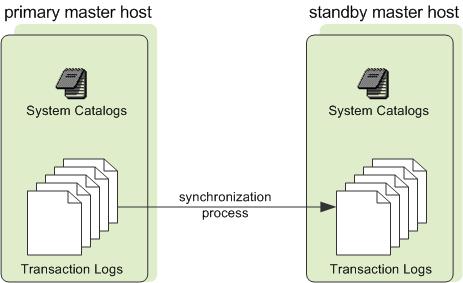Overview of Master Mirroring
You can deploy a backup or mirror of the master instance on a separate host machine or on the same host machine. A backup master or standby master serves as a warm standby if the primary master becomes nonoperational. You create a standby master from the primary master while the primary is online.
The primary master continues to provide service to users while a transactional snapshot of the primary master instance is taken. While the transactional snapshot is taken and deployed on the standby master, changes to the primary master are also recorded. After the snapshot is deployed on the standby master, the updates are deployed to synchronize the standby master with the primary master.
Once the primary master and standby master are synchronized, the standby master is kept up to date by the walsender and walreceiver replication processes. The walreceiver is a standby master process. The walsender process is a primary master process. The two processes use Write-Ahead Logging (WAL)-based streaming replication to keep the primary and standby masters synchronized. In WAL logging, all modifications are written to the log before being applied, to ensure data integrity for any in-process operations.
Note: WAL logging is not yet available for segment mirroring.
Since the master does not house user data, only system catalog tables are synchronized between the primary and standby masters. When these tables are updated, changes are automatically copied to the standby master to keep it current with the primary.

If the primary master fails, the replication process stops, and an administrator can activate the standby master. Upon activation of the standby master, the replicated logs reconstruct the state of the primary master at the time of the last successfully committed transaction. The activated standby then functions as the Greenplum Database master, accepting connections on the port specified when standby master was initialized.
Parent topic: Overview of Greenplum Database High Availability